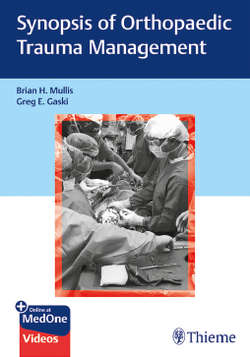Читать книгу Synopsis of Orthopaedic Trauma Management - Brian H. Mullis - Страница 40
II. Implant Construct Design and the Mechanobiology of Fracture Healing
ОглавлениеThese definitions are important to clinical practice because the mechanics of fracture fixation are an exercise in modulating strain (fracture motion) to promote the desired mode of fracture healing (primary vs. secondary).
A. Primary bone healing
1. Occurs in the presence of bony contact and the absence of fracture motion.
2. This is classically observed with simple fractures and is accomplished with interfragmentary compression.
3. Strain must be less than 2%, which is achieved with compression and the absence of a fracture gap.
B. Secondary bone healing
1. Any gap at the fracture line or flexibility in the fixation construct will allow some relative motion between the bone fragments and result in secondary healing.
2. Characterized by the formation, ossification, and later remodeling of a bridging cartilaginous callus.
3. Preferred for comminuted fractures as well as simple long bone fractures treated with intramedullary implants.
4. The magnitude and direction of the micromotion occurring at the fracture site are known to influence the speed and course of secondary healing. In general, moderate axial strains (approximately 2–10%) support callus formation maturation, whereas shear or torsional strains may disrupt callus and delay healing.
5. Excessive strain (motion) at the fracture gap may lead to nonunion.
C. Modulating strain
1. Given the absence of intraoperative “strain gauges,” the surgeon must try to anticipate the postoperative demands on the construct as a result of the fracture’s natural stability, patient body mass, and weight bearing restrictions.
2. Surgeons attempt to control interfragmentary strain by modulating construct stiffness. This concept bears clinical significance because a mismatch between desired healing mode and construct stiffness will lend itself to nonunion, and a fixation construct that is not strong enough or has a significant amount of strain concentrated over a small working length will fatigue prior to osseous union.
D. Example of excessive stiffness
1. Comminuted distal femur fracture with large original length where secondary bone healing is desired.
2. Application of an excessively stiff implant limits movement in a fracture that requires micromotion for callus formation.
3. In the presence of a large fracture gap or complex fracture, interfragmentary strains may be too low to allow secondary healing to occur. This can be observed clinically in locked plating constructs where no callus forms or asymmetrical callus forms only at the far cortex where some motion occurs as a result of plate bending.
4. In the absence of callus formation to support load sharing, the implant experiences high stresses during weight bearing and the construct may experience early fatigue failure.
5. To avoid this outcome, the surgeon would choose to apply implants that are less stiff/more flexible to allow some interfragmentary motion, and would design a construct that spreads the stress over a greater length.
E. Example of excessive strain
1. A simple fracture stabilized with a relatively flexible construct.
2. A very small gap such that even small relative motions between the bone ends can cause large strains because the original length across the gap is small (▶Fig. 4.3a).
3. The excessive tissue strains may induce some resorption at the bone ends to effectively lengthen the gap and reduce the strain to more optimal levels for secondary healing.
4. However, if this does not occur, the fracture may go on to nonunion as the strain is too high for bone to bridge the gap.
5. To avoid this situation, the surgeon should be particularly wary of the simple fracture that has been compressed and stabilized with a plate that is too thin, too short, or has insufficient number of screws.
6. This situation may lead to motion at the fracture site resulting in secondary rather than primary bone healing and a greater likelihood of the construct failing before union.
F. Given the importance of interfragmentary strain for controlling the healing outcome, how then can construct stiffness be modulated to produce the desired response? The following sections provide a series of simple and intuitive guidelines to follow when considering the implant configuration and may serve as a guide to understanding and applying the biomechanical principles of fracture fixation.
